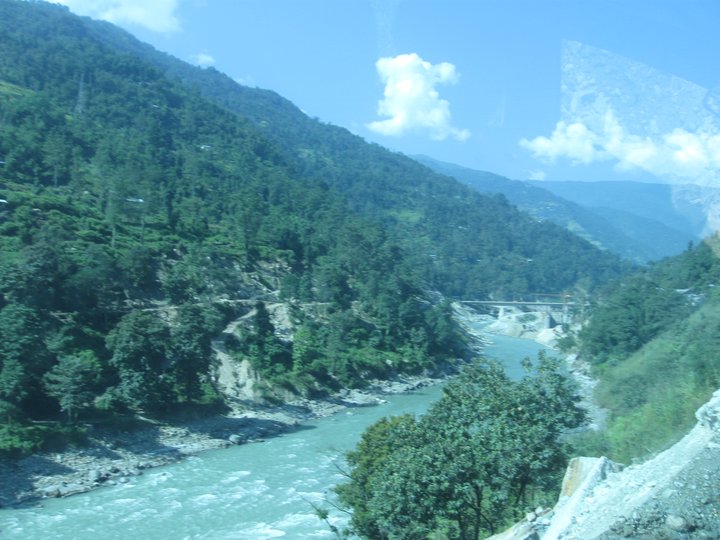
WANDERLUST Sea Nile Photo : M K Paul Samsara Mansarovar
The Nile River stands as one of the world’s most iconic waterways, weaving through the arid landscapes of North Africa, nurturing civilizations, and shaping the destiny of millions. From ancient times to the present day, the Nile has been more than just a source of water; it has been the lifeblood of nations, the cradle of civilization, and a testament to the enduring power of nature. This essay explores the profound impact of the Nile River on the history, culture, and livelihoods of the peoples of North Africa.
The Ancient Nile:
Birthplace of Civilization Stretching over 4,000 miles, the Nile is often regarded as the longest river in the world. Its annual floodwaters, replenished by seasonal rains in the Ethiopian Highlands, created a fertile oasis in the midst of the surrounding desert. This natural abundance enabled the rise of some of the earliest known civilizations, including the ancient Egyptian civilization, which flourished along the banks of the Nile more than 5,000 years ago.
The Nile’s annual flooding not only provided vital water and nutrients for agriculture but also served as a natural calendar for the ancient Egyptians, guiding the timing of planting and harvesting. This symbiotic relationship between the river and its inhabitants laid the foundation for one of the most enduring and sophisticated civilizations in human history.
The Legacy of Pharaohs and Pyramids The Nile’s influence extended far beyond the realm of agriculture. It played a central role in shaping the religious beliefs, social structures, and artistic achievements of ancient Egypt. The pharaohs, believed to be living gods, derived their authority from the divine order symbolized by the annual flooding of the Nile. Temples and monuments were constructed along the river’s banks to honor the gods and commemorate the achievements of the ruling elite.
Perhaps the most enduring symbols of ancient Egypt are the majestic pyramids that dot the landscape along the Nile. These monumental tombs, built to house the remains of pharaohs and ensure their eternal journey to the afterlife, stand as a testament to the ingenuity and engineering prowess of ancient Egyptian civilization.
The Nile in Myth and Legend The Nile River also loomed large in the mythology and folklore of ancient Egypt. It was not merely a physical entity but a divine force, personified in the form of Hapi, the god of the annual inundation. According to myth, the annual flooding of the Nile was the result of Hapi’s tears of joy, which ensured the fertility of the land and the prosperity of the people.
The Nile’s significance extended beyond Egypt’s borders, influencing the beliefs and traditions of neighboring civilizations such as Nubia and Kush. Its waters were believed to possess mystical properties, capable of bestowing life and fertility upon those who revered it.
The Nile:
A Source of Inspiration and Exploration Throughout history, the Nile has captured the imagination of explorers, adventurers, and scholars from around the world. From Herodotus and Alexander the Great to modern-day researchers, countless individuals have been drawn to the river’s mysteries and allure.
In the 19th century, European explorers embarked on expeditions to uncover the source of the Nile, sparking a wave of scientific inquiry and discovery. The quest to unravel the river’s secrets led to the mapping of its course, the study of its ecosystem, and the documentation of its cultural heritage.
The Nile in the Modern Era: Challenges and Opportunities Today, the Nile remains a vital lifeline for the nations of North Africa, supporting agriculture, industry, and urban development. However, its resources are increasingly strained by population growth, pollution, and climate change. The construction of dams and irrigation projects has altered the river’s flow, impacting downstream communities and ecosystems.
In the face of these challenges, there is a growing recognition of the need to manage the Nile’s resources sustainably and equitably. International efforts such as the Nile Basin Initiative seek to promote cooperation among riparian states and ensure the long-term viability of the river and its basin.
Conclusion:
The Nile River stands as a timeless symbol of resilience, adaptability, and human ingenuity. From its role as the cradle of civilization to its significance in the modern era, the Nile continues to shape the destiny of North Africa and inspire awe and wonder in all who behold its majesty. As we navigate the challenges of the 21st century, let us remember the lessons of the Nile: that with cooperation, stewardship, and reverence for the natural world, we can build a sustainable future for generations to come.
By: Hanisha
Write and Win: Participate in Creative writing Contest & International Essay Contest and win fabulous prizes.


